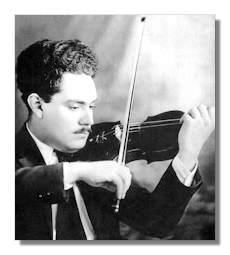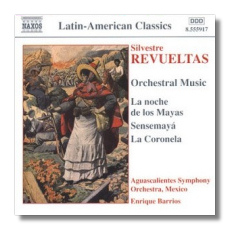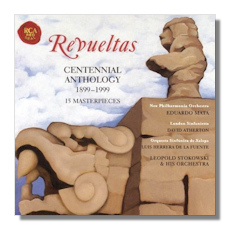
The Internet's Premier Classical Music Source
Related Links
-
Find CDs & Downloads
Amazon - UK - Germany - Canada - France - Japan
ArkivMusic - CD Universe
Find DVDs & Blu-ray
Amazon - UK - Germany - Canada - France - Japan
ArkivMusic-Video Universe
Find Scores & Sheet Music
Sheet Music Plus -
Recommended Links
Site News
Silvestre Revueltas

(1899 - 1940)
Perhaps Mexico's greatest composer, Silvestre Revueltas (December 31, 1899 - October 5, 1940) died young, with a slender catalogue of music to his credit. Also a violinist, he trained in both Mexico and in the United States. He held minor orchestral posts in the United States (Texas and Alabama) before landing an assistant conductorship with the Mexico Symphony Orchestra. During this time, he wrote many of his best-known orchestral scores and also taught at the conservatory from 1929 to 1935. Beginning in 1935, he wrote film scores. In 1937, he toured Spain during the Spanish Civil War. His left-wing politics had allied him to the Republican cause. He returned to Mexico to teach. Alcoholism killed him at 40.
Revueltas's music takes off from Igor Stravinsky, particularly from Le Sacre du printemps, in the service of writing an identifiably Mexican music. We can thus compare Revueltas to someone like Aaron Copland and Virgil Thomson in the United States and to Carlos Chávez and the painter David Siqueiros in Mexico. Unlike Chávez, Revueltas is less interested in Mexico's epic past than in contemporary sounds in the street, as in Caminos (1934) and Janitzio (1933). The major exception, however, is Sensemayá (1938), inspired by a poem on the ritual killing of a snake and probably his most-played work. Like all of his music, it sports strong, asymmetrical rhythms and bright colors. Revueltas died in the middle of his most vital work and leads to the question of what more he would have accomplished, had he lived. ~ Steve Schwartz
Recommended Recordings
Orchestral Music
- Sensemayá, La Coronela, La noche de los mayas/Naxos 8.555917
-
Enrique Barrios/Aguascalientes Symphony Orchestra Mexico
- Sensemayá, La Coronela, La noche de los mayas/Koch 3-7421-2 reissued on Naxos 8.572250
-
Gisele Ben-Dor/English Chamber Orchestra & Santa Barbara Symphony
- Sensemayá, Homenaje a Federico García Lorca, Ocho por Radio, Toccata for Violin and Orchestra, Alcancías, Planos, La noche de los mayas/BMG Catalyst 09026-62672-2
-
Eduardo Mata/New Philharmonia Orchestra;
David Atherton/London Sinfonietta; Luis Herrera de la Fuente/Orquesta Sinfonica de Jalapa
- Sensemayá, Redes, Itinerarios, Caminos, Homenaje a Federico García Lorca, Danza geométrica, Cuauhnáhuac, Janitzio, Alcancías, El renacuajo paseador, Ocho por radio, Toccata, Planos, La Noche de los Mayas, Cinco Canciones para Niños y Dos Canciones Profanas/RCA 09026-63548-2
-
Eduardo Mata/New Philharmonia Orchestra;
David Atherton/London Sinfonietta; Luis Herrera de la Fuente/Orquesta Sinfonica de Jalapa; Leopold Stokowski Symphony Orchestra
- Sensemayá, Suite "Redes" w/ Ginastera & Orbón/Dorian DOR-90178
-
Eduardo Mata/Simon Bolivar Symphony Orchestra of Venezuela















